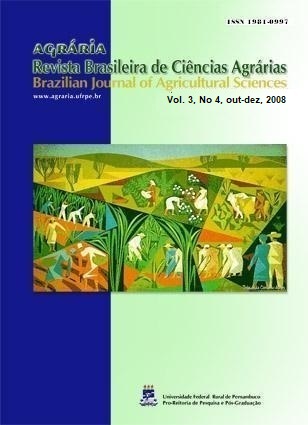Use of Araripe gypsum to improve sugarcane root environment
DOI:
https://doi.org/10.5039/agraria.v3i4a282Keywords:
gypsite, calcium sulphate, roots, sugarcaneAbstract
Gypsum is obtained from the mineral gypsite, calcium sulphate in the dihidrated form. Both mineral and residual gypsum forms have shown efficacy when applied in soils for several uses, as for example, reduction of aluminum saturation and reclamation of sodic soils. The objective of this work was
to evaluate the potential of the Araripe gypsum to improve of sugarcane root environment. An experiment was carried out in an agricultural field of Sirinhaém municipality, Pernambuco State, Brazil. The treatments were composed of a control, lime used without gypsum, gypsum without lime, and
the combination of lime and gypsum. The application of Araripe gypsum allowed an increase in the percentage of sugarcane root distribution. The downward movement of calcium as CaSO40 was determinant for the root environment improvement in depth. Calcium contents were found to increase in depth 30 days after application, even with the gypsum being applied on surface without incorporation, reducing the aluminum content.



